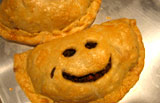 |

|
|
 |

|
The
English Countryside:
|
|||
|
The real question is…what happens when you leave the city? Are you back in a world of sub par dining? Is the rest of the country still an abyss of mushy vegetables and lumps of gray indistinguishable meat? Well the answer is a resounding NO! Today the English countryside offers some of the most consistently appetizing, delightfully satisfying FRESH fare a traveler could hope for. The vast majority of local pubs, inns and bed & breakfasts scattered across Britain boast menus of substantial variety and above-average quality.
It may sound simplistic, but increasingly, fresh ingredients are a rarity in restaurant food, especially for us nomads on the road. Perhaps because Britain is an island, still largely agricultural outside of London proper, many products are locally grown. Whether or not that's the reason, the fact is that the base ingredients used by English locals have a farmer's market level of quality and no long-standing relationship with plastic containers, chemicals or freezers to interfere with natural taste. Fruits and greens are crisp and just picked from the garden, home baked breads and pastries are noticeably textured, fish tastes barely plucked from the sea, cheeses creamy, nutty or tangy, but bursting with flavor-the offerings vary, but the sum total of these parts is nothing short of sublime. Although I've had occasion to visit the U.K. many times over the years, this past summer I traipsed across the island with a twenty-something city crowd visiting for the very first time. Our route initially curved south through the small villages of Sussex and Kent, amidst cascading bouquets of flowering vines, hollyhocks, 7-foot wide roads and ancient castles. Then on west to Cornwall with its uniquely quaint fishing villages dotting the shoreline and its famously breathtaking coastal scenery. Along the way we happily ate and drank to excess, routinely asking to partake of the warm and friendly specialties of the house. We sampled all the peasant staples: crispy fish 'n chips, steak & mushroom and cheese & onion pies, dip-in egg cups, cock-a-leekie soup, Cornish pasties, bangers and mash, toad in the hole, shepherd's pie, the ubiquitous ploughman's lunch, fish cakes, bubble and squeak, Welsh rarebit, cheese straws, John Dory, and roast lamb with mint chutney, to name a few, followed by a never ending selection of desserts, such as shortbread, fruit trifle, spicy gingerbread, sticky toffee and bread & butter pudding, cream cakes, pies and custards galore. Of course most establishments offered many less traditional options as well, reflecting ethnic trends that are not restricted to the city. And oh, the English beer…we mustn't forget the libations! An incredible array of our favorite ale styles-mild, bitter, best bitter, porter, stout, barley wine-not to mention hard ciders, lagers and lime and shandies. All luscious and at the proper temperature, of course… We seriously almost lost some of our party permanently to the small village of Ripe in East Sussex after sampling the finest, creamiest hand pumped Real Ale imaginable in the (only) local pub. "I could retire here based on the beer alone…" was the thrust of that afternoon's conversation, and these were young folks! Inevitably, in the course of our sampling, we made friends of all ages. A gentle couple in Lewes who found my oh-so-youthful companions most entertaining invited us into their home to share a traditional tea. They had a lovely manor estate complete with a croquet lawn, a wishing well and a glorious tended garden too pretty for words. The fellow next door owned homing pigeons and about 60 of them dotted his roof.
M'lady Barbara treated us to her homemade flapjacks with fresh strawberries and cream. Soft, dense and chewy, these porridge oat bars were totally addictive and surprisingly decadent for just three ingredients: 6 oz. Demerarer sugar, 6 oz. soft tub margarine (or butter), melted together with just 8 oz. of oatmeal (!) then baked for 30 minutes @350 till golden. Cut them while warm, says Barbara, and "leave to cool in the tin." M'Lord John, seeing us sated on treats, decided
a stroll was in order, and we set off spontaneously with his energetic
Airedale Wolfhound across the brookland of the River Ouse. We
saw bluebells and primrose, herons, swans, comorants, even an
old military firing shack probably built sometime in the 1940s
by the loyal British Resistance when a German invasion seemed
imminent. Turned out our host is an active local conservationist
and knowledgeable nurseryman, so our guided walk was not just
beautiful but a wealth of information. Once in Looe, we enjoyed an incredibly picturesque 180 degree view of the harbor from our bedroom window at the Deganwy Hotel perched on the hill overlooking the harbor, only a hundred yards or so walk from the station. Our luck held out even at the beach, which was sandy, sunlit and full of mostly British tourists. After sunning, we consumed a host of Cornish pasties, mostly sold as take-out. Each shop seemed to have their own slant on construction and fillings, offering us no choice but to sample them all. We ate potato and lamb and mushroom and onion and cheddar and beef and olive and chicken…A few were hefty with dough similar to a calzone; the majority were rich and flaky with a lot of shortening in the crust. Thirsty after all that eating, we 'checked out the ambiance' of three of the high street pubs--unaware that our hosts Duncan & Kathy had a full bar in their comfy guest drawing room, and a nice selection of wine to boot.
Looe itself proved to be a quaint, quiet fishing village with lovely pubs and lots of souvenir shops, bustling but not overrun with curious visitors. By far it's best attribute though, and the draw for our stay, was its starting point for the 5-mile mostly cliff-side Looe to Polperro Walk, finishing at the next pretty fishing village up the coast. Full of incredible vistas, hauntingly beautiful rolling hills, a vivid assortment of flora and fauna and the constant sights, smells and sounds of the sea below you, it is an unforgettable sensory experience. While much of the hike was leisurely, some of the final uphill stretches were fairly aerobic, a good thing considering the delectable Cornish Clotted Ice Creams available in the teeny Talland bay shortly before its Polperro end. Without a doubt, this coastal walk was the stunning highlight of our trip. (There are thousands; see additional information on finding the right one for you in the tips section at the end.) Our hike ended on a winding street which brought us quietly down into the picturesque fishing village of Polperro. As in Looe, clusters of cottages perch on steep slopes overlooking the boats in the harbor. Narrow cobblestone streets abound in between tightly spaced homes, gurgling waterways and footbridges, garden window boxes and brightly colored flowers. The high street is tiny, so a bit crowded, but charming. Working our way slowly up the main street incline to the bus stop, we were stopped by some friendly ladies at a church yard sale. Comically, there we purchased all sorts of unique treasures, new and old, to bring back to the States…and a few homemade flapjacks for the ride home. GETTING THERE
TIP: Lunch…usually noon to 3 p.m., is the time of day to enjoy your large meal of the day throughout Britain. Prices are generally less, portions are generous-you will save a considerable amount of your travel budget by eating more at mid-day and enjoying a light meal, say soup and sandwich or salad for supper. TIP: You can generally tell if you are drinking Real Ale if it is served using a hand pump. TIP: Some B&Bs will help arrange for car and/or car and driver hire for day trips about the area. B&B owners are also a wealth of information on local sights, tours and best meal options. Through photos and email, you can oft-times narrow down your choices and book the best establishment for your needs well in advance. This gives you time to establish a relationship and along with it, maximum planning ability and control over your travel budget.
TIP: One aspect of traveling the British countryside that truly cannot be missed is the walking tour. Whether initially you get where you're going by train, car or bus, the most wonderful way to truly capture the essence of England up close and personal is on foot. There are a mind-boggling 630 miles of superb walks promising "the ever present sense of the sea" just on the southwest coast alone…and that comprises only one of fifteen National Trails in England and Wales. All of the travel arrangements for our group
were made independently utilizing websites on our Travel Tips
column as the primary source of information. You can do it too…happy
traveling, happy eating! |
I think we must have had an entirely different experience in the UK. (Fresh Food and Real Ale – week 1). We were up in Edinburgh and they served something called ‘Neeps & Tatties.’ The items were boiled so long that I couldn’t even recognize what I was eating. Come to think of it… I couldn’t taste them either. Later I found that Neeps’ are Turnips and ‘Tatties’ are potatoes.
--- Lindy, Phoenix, AZ
My mouth was watering as I read some of your descriptions of the fantastic fare of ... England? I had always felt smug about the lowly reputation of British cuisine as this gave us at least one country with a worse culinary reputation than America's. I guess I'll have to change my views. Your article made me actually want to take a CULINARY tour of Britain. Yummy yummy yummy. Sandy Miner Thanks for your note. Thanks to Traveling Boy I get to interview a world famous chef this week who is widely recognized as spearheading the Yummy movement in Ireland. Guess I'll have to take yet another culinary tour a little further north and check it out... (I love my job!) --- Wendy
 |
|
| ||||
|
| ||||
This site is designed and maintained by WYNK Marketing. Send all technical issues to: support@wynkmarketing.com
|
Wendy's
|


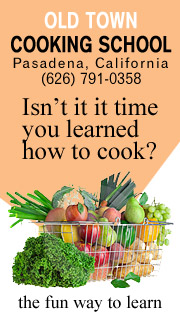





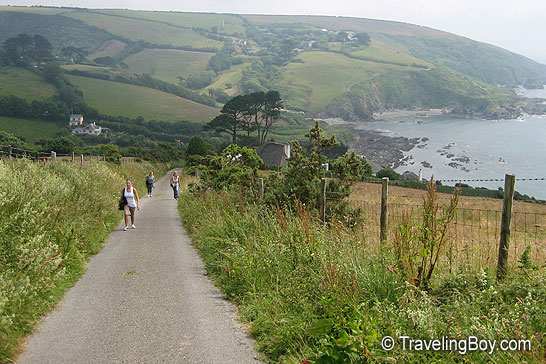
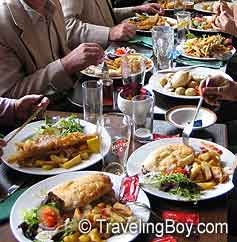
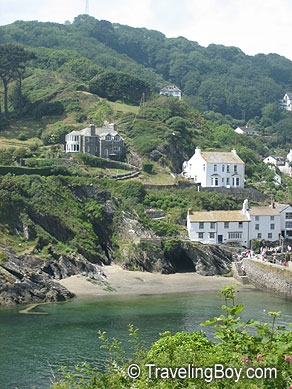
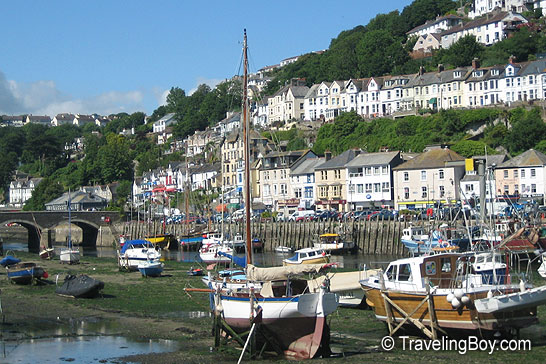
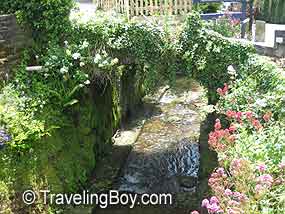

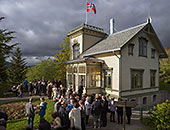

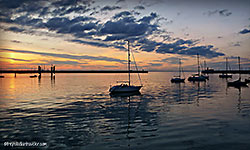

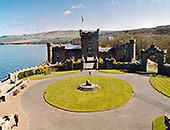

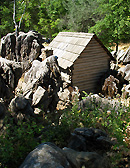

 hen
I was little, Cornish pasties were a much-loved staple in my Brititsh
mum's meal repertoire. While other kids ate Hamburger Helper or
Sloppy Joes frequently, we dined on yummy "meat pies"
with vitamin rich homemade gravy. We used to squabble over who
got the "best face" on top, but not about eating our
vegetables, because in this dish they tasted oh so good.
hen
I was little, Cornish pasties were a much-loved staple in my Brititsh
mum's meal repertoire. While other kids ate Hamburger Helper or
Sloppy Joes frequently, we dined on yummy "meat pies"
with vitamin rich homemade gravy. We used to squabble over who
got the "best face" on top, but not about eating our
vegetables, because in this dish they tasted oh so good.